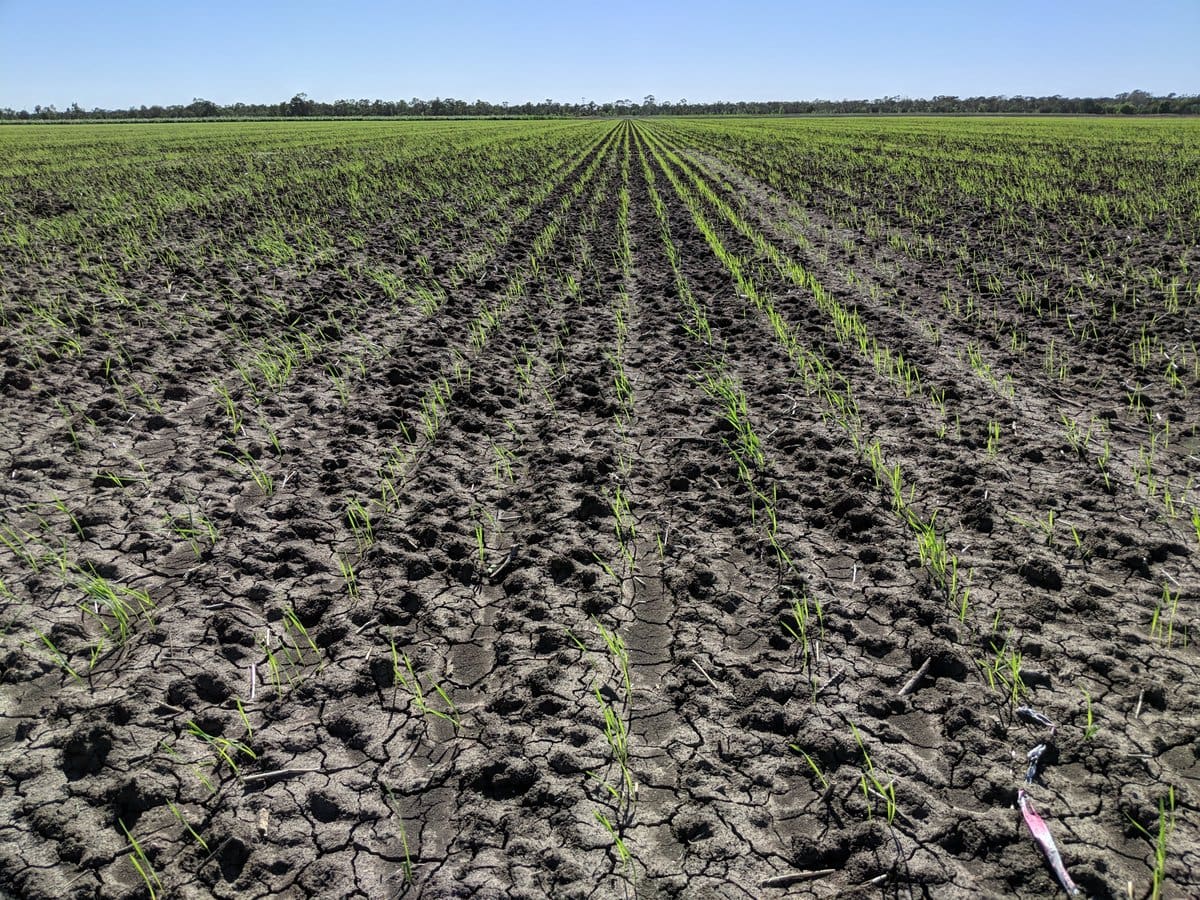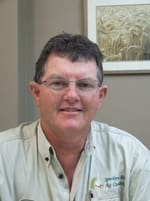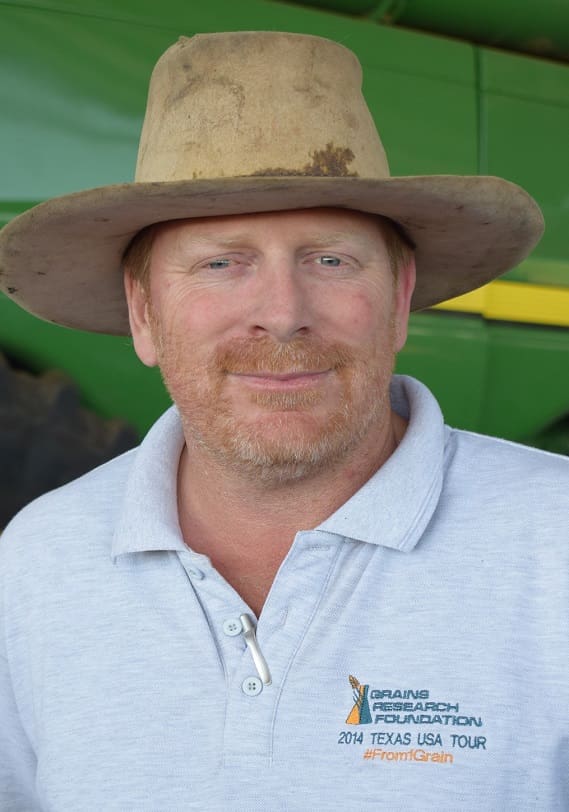
An early planted CQ wheat crop. Photo: Darren Aisthorpe
SIGNIFICANT rainfall events across Central Queensland (CQ) in the last month have turned around the fortunes of the region’s grain growers, boosting winter crop prospects as planting gets underway in earnest.
It’s not so buoyant further south on the Darling Downs and into the New South Wales cropping belt where the long-running dry has depleted soil moisture levels, forcing growers to weigh up their options as the sowing window begins to open.
In Central Queensland, Spackman Iker Ag Consulting principal, Graham Spackman, Emerald, said recent rains meant at least two-thirds of the area was “in pretty good shape” and he expected a big winter crop to be sown throughout the region.
“Planters started this week putting wheat in. Wheat will be going in over the next two or three weeks, and chickpeas from late April onwards,” he said.
“There will probably be more winter cereals go in than we have seen in the last few years because it is fairly early for chickpeas yet and there is some uncertainty about chickpea prices. We also need stubble cover on a lot of our paddocks, so we are keen to get a reasonable amount of wheat and barley in.
“It has been a good turnaround. The area looks nice and green. We will need some follow up rain in the next month.”
In the balance
On the Darling Downs, AgForce Grains president and Warra farmer, Brendan Taylor, said much of the area had some subsoil moisture but, with the main sowing window still some way off, the situation was tenuous and could swing either way.
“We are hoping the moisture is still there by the end of the month and will be wet enough to plant on top. The first week of May is really the opening of the planting window for a lot of cereals, and way too early for chickpeas,” he said.
“The thing in a lot of people’s minds is that it is wet enough now, the profiles are about 50 per cent full and maybe better in some of the longer fallows, but when is the next fall of rain going to be? It is one thing getting the crop planted, it is another harvesting it.
“A similar thing happened last year for a lot of people. They had enough rain to plant but it never rained again until it was too late. That will be firmly in a lot of people’s minds. And in the commentary on the season ahead, they are talking about dry weather.”
Mr Taylor said he expected a lot of growers would give chickpeas a break this year and stick to growing wheat and barley, particularly barley because of the high demand for feed.
“At the moment, the price of chickpeas is considerably down. While it is still a good number at $600-$650/tonne, it is not the $850-$950/t it has previously been. There is nothing to say it couldn’t get back there,” he said.
“Regardless of whether the crop comes to much or not, a cereal crop leaves you with good ground cover from a stubble point of view.
“As much as we like growing chickpeas, after chickpeas have been harvested within a month or so you have no ground cover and that doesn’t really fit with a zero-tillage system. If you get heavy storm rains in the summer you struggle to capture the runoff whereas a cereal stubble will go a long way to capturing more subsoil moisture.”
Wait for moisture
In NSW, Grain Orana Alliance chief executive officer, Maurie Street, said many growers in central and northern NSW were still waiting for subsoil moisture to build up, although there had been useful rains in some areas in March.
“Around Dubbo for a three-week period in March some people had 30 to 40 millimetres which allowed a lot of dual-purpose feed crops to go in, but that is finished now and the farming program is held up,” he said.
“There was much better rain (50mm to 100mm) in a band north of Gilgandra to Coonamble and east from there. But it was storm rain that came hard and fast and anyone with good ground cover probably kept a reasonable amount of the rainfall, but anybody with bare paddocks would have had a lot of the moisture run off. Although very welcome, it wasn’t as long lasting as one might think such rainfall totals would bring.”
Mr Street said one of the main decision points looming for growers was whether to plant canola or not.
“With low subsoil moisture and the lack of a timely sowing opportunity, I think canola will be the first one they will bypass. Some growers have already decided to take it out of their rotation this year. Every day that goes by there will be more and more people who do that,” he said.
“A lot of those acres could potentially go to a cereal crop, probably predominantly wheat.
“There is a lot of negative discussion around barley with China dropping out of the market. There are a lot of concerns that that could see barley in the doldrums for some time.
“So, if they don’t get canola in, the big crop is going to be wheat. Then there will be a number of chickpeas and field peas go in.”






HAVE YOUR SAY